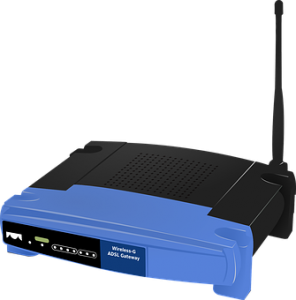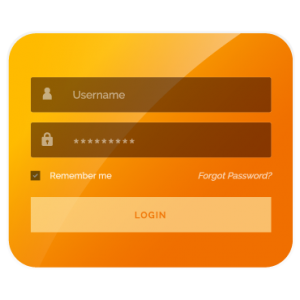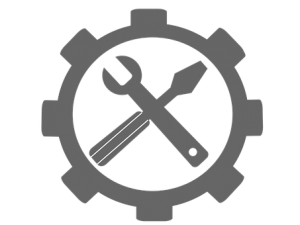Cisco Router Setup
In today’s digitally driven world, establishing a reliable and secure network has become paramount, irrespective of whether you’re running a complex business operation or simply setting up a home network. The heart of this network infrastructure is the router, a critical device that links your local network to the broader scope of the Internet. When it comes to network technologies, Cisco has carved out a notable reputation as a top-tier provider, offering an array of routers that cater to a diverse spectrum of requirements, ranging from small-scale home networks to comprehensive enterprise-level systems.
This complete guide is intended to assist you in navigating the Cisco router setup process. This setup procedure, while detailed, is engineered to be user-friendly, making the process of network establishment straightforward, even for those with minimal technical expertise. The scope of this guide encompasses both the conventional wired Cisco router setup and the increasingly prevalent Cisco wireless router setup. The aim is to deliver you with a solid understanding of the steps involved in both methods.
Configuring a Cisco router involves adjusting several settings, such as network names, security protocols, etc. Each set is intended to optimize your network to match your unique requirements and fortify it against potential security risks. The subsequent sections will detail these setup procedures, guiding you through each step of the procedure. Whether you’re a networking novice or a seasoned expert, this guide will serve as a valuable resource as you embark on your Cisco router setup journey. Let’s begin.
How to Setup Cisco Wireless Router Without CD:
Setting up Cisco router without CD, whether wired or wireless, involves a series of steps to configure the device correctly. The process can appear daunting, but it can be straightforward with a bit of guidance. So let’s delve into the Cisco router setup.
- Connect Your Router: Kick-start your router setup by connecting your Cisco router to your computer with an Ethernet cable. The first step of the Cisco router setup doesn’t require a CD – you can easily setup Cisco router without CD.
- Access the Router’s Web Interface: Next, you need to open a web browser and type in your router’s IP address. This is part of the Cisco router setup IP address process. If you’re unsure of this address, you can find it on your router – typically, the default Cisco router setup IP address is 192.168.1.1.
- Enter Username and Password: Following this, the browser will prompt you for a username & This step is crucial to the Cisco router setup username and password process. If you’re setting up the Cisco router for the first time, use the default Cisco router setup username and password.
- Configure Your Settings: Once you’ve logged in, you can start configuring your settings. If you’re performing a Cisco WiFi router setup, configure your wireless settings correctly. This is a crucial part of the Cisco WiFi router setup.
- Reset and Re-Enter Credentials (if needed): You may need to reset your router and re-enter your credentials. This is again part of the Cisco router setup username and password process. Keep track of any changes you make during this step of the router setup.
- Setup without a CD: There’s no need to worry if you don’t have a setup CD. As we’ve seen, you can complete the setting up Cisco router without CD. This applies to how to setup Cisco wireless router without CD too.
The guide above should help you in your Cisco router setup process, whether you’re working on a standard router setup, a Cisco WiFi router setup, or trying to setup Cisco router without CD. Always ensure you’ve safely noted your router’s IP address and login credentials for future use.
Common Issues with Cisco Router Setup:
While generally straightforward, the process of Cisco router setup can sometimes be met with a few challenges. Whether you’re dealing with a wired or a Cisco wireless router setup, you might come across certain issues requiring troubleshooting.
- Unable to Access Router’s Web Interface: One of the most common issues during the Cisco router setup process is being unable to access the router’s web interface. This is usually a problem with the Cisco router setup IP address. Ensure you use the correct IP address for your specific router model.
- Default Username and Password Not Working: Another problem you might encounter during the Cisco router setup is that the default username and password aren’t working. This is a common issue with both traditional Cisco wireless router setups. It often occurs if the default credentials have been changed in a previous setup.
- Weak or No WiFi Signal: If you’re doing a Cisco wireless router setup, you might face an issue where the WiFi signal is weak or not present at all. This could be due to multiple factors, such as incorrect wireless settings or physical obstacles causing interference.
- Firmware Issues: Firmware issues can also complicate the Cisco router setup process. You should update your router’s firmware to the latest version to resolve any such problems.
- Difficulty in Setting up without a CD: Some users find it challenging to setup Cisco router without CD or setup Cisco wireless router without CD. Though the process is similar, it might seem daunting without physical media guiding the installation.
These are certain most common issues you might face during the Cisco router setup process or the Cisco wireless router setup process. The next section will discuss solutions for these problems and how to ensure a smooth router setup experience.
Fix Common Cisco Router Setup Issues:

Issues can sometimes arise, no matter how efficient the Cisco router setup process is. Here, we’ll discuss how to resolve some common problems encountered during Cisco router setup and Cisco router setup IP address configuration.
- Trouble Accessing Router’s Web Interface: If you’re having difficulty accessing the router’s web interface during the Cisco router setup, check your connection and ensure you’re entering the correct IP address. If you’re uncertain about the Cisco router setup IP address, refer to your router’s manual or the label on the router itself. If this doesn’t work, reset your router’s factory settings.
- Default Username and Password Not Working: During the router setup, you might find that the default username and password are not working. This is often because they’ve been changed during a previous setup. If this is the case, reset the Cisco router, which will also reset the Cisco router setup username and password to their defaults. If you’ve forgotten the newly set Cisco router password setup, a factory reset will be necessary.
- Can’t Connect to the Internet Post Setup: If you can’t connect to the Internet after your router setup, check whether your router’s WAN settings match your ISP’s required settings. This problem is common when adjusting the Cisco router setup IP address settings.
- Forgotten Username or Password: If you forget the username or password you established during the Cisco router password setup, you’ll need to reset your router. Doing so will restore the default Cisco router setup username and password, allowing you to log in and set a new password.
- Firmware Issues: If you’re experiencing firmware issues during the Cisco router setup, visit the Cisco support website to check for any available updates for your specific router model.
Using these tips, you can navigate the common issues that occur during the router setup process, from the initial login with the Cisco router setup username and password to set your Cisco router setup IP address. The key is to take your time and follow each step carefully.
Conclusion:
In this guide, we’ve discussed the steps involved in the Cisco router setup process. The steps remain similar whether you’re setting up a wired or wireless router. The process might appear complex at first glance, but with our comprehensive guide, you’ll find the Cisco router setup process quite manageable.
The Cisco router setup, whether it’s a Cisco WiFi router setup or a Cisco wireless router setup, involves similar steps – connecting the router, accessing the web interface, configuring the settings, and dealing with any potential issues. While issues can arise, such as problems with the IP address or username and password, the solutions we’ve provided here can help you overcome these hurdles.
Ultimately, whether it’s a Cisco WiFi or a standard router setup, the most important factor is to carefully follow each step and keep your router’s login credentials and IP address handy. With patience and a systematic approach, you’ll have your Cisco router efficiently set up quickly.
Remember, practice makes perfect. The more familiar you become with the Cisco router setup process, the easier it will be. Whether it’s a Cisco WiFi router setup or fixing Cisco wireless router setup issues, this guide should serve as a valuable reference for you. To know more about Cisco routers and resolve any issue related to them, please visit our Cisco Router Support page.

